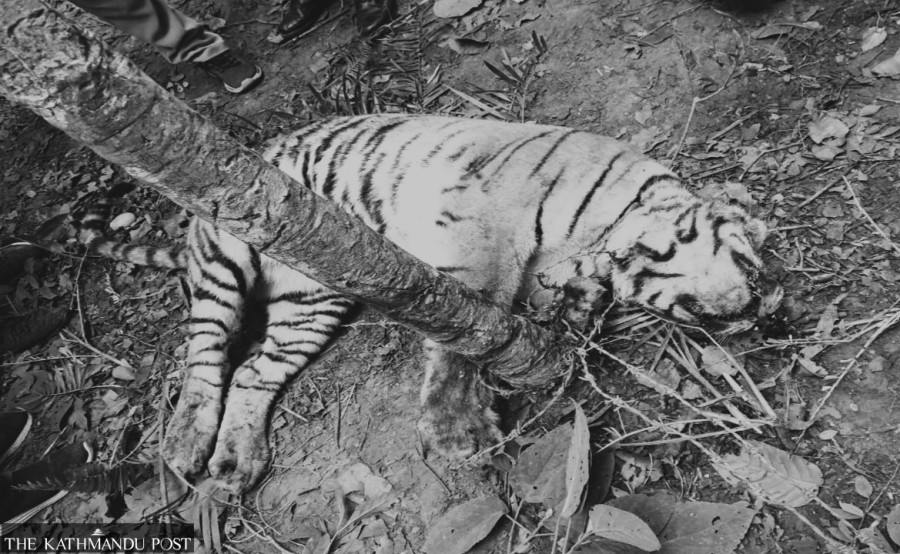Editorial
Call of the wild
The violent death of a tiger within an area deemed safe raises doubts about wildlife safety.
Two news pieces about big cats drew the readers’ attention this week—the first was the astounding news about a snow leopard captured successfully by security and forest officials in Morang, and the second was the depressing development of a striped tigress being killed in a trap laid by poachers in Kailali. Officials are investigating how the snow leopard landed in the plains of Jhapa while its natural habitat is the high mountains, and one angle they will be looking at is whether the “ghost of the mountains” had escaped the net of poachers. The death of the tigress, though, seems to be a clear case of poaching, as it was found in a snare, with multiple injuries, in the Karnali bio-corridor at Amarawati Community Forest in Janaki Rural Municipality-9.
The fact that the tigress died a violent death within the protected area raises doubts about the mechanisms the government put in for the safety of protected animals, including, of course, the tigers. Despite the impressive progress the country has of late made in increasing the number of tigers—the count more than doubling from 121 to 355 tigers between 2009 and 2022—we seem to have no contingency plans on how to protect them.
This is not to say that the government has done nothing—it has formed community-based anti-poaching units, deployed security forces, and used technology to curb the poaching of wild animals, including tigers and rhinos. Last year, Nepal introduced the National Tiger Conservation Act Plan (2023-32), which aims to manage tiger habitats effectively, reduce human-tiger conflicts, enhance connectivity and genetic viability of tiger populations and strengthen institutional capacity and coordination. However, these efforts seem insufficient, as the poachers are finding loopholes and getting away with their crimes. Moreover, poachers are often found to be drawn into the crime due to poverty. A holistic conservation plan, therefore, must involve the financial uplift of community people, changing them from potential poachers to protectors of wildlife.
A report about Nepal’s tiger conservation efforts on Mongabay, a news site covering environmental science and conservation, mentions that researchers believe big cats prey on livestock in human settlements due to insufficient big-sized prey in Bardiya National Park. The case, however, is different in Parsa National Park, where big prey are plentiful. Although previous such attempts have failed, conservationists believe in reintroducing sufficient prey for tigers in their habitats.
Poaching, though, is not the only risk facing wild animals. The increase in the tiger count, for instance, has come with huge risks for the lives of humans and livestock. People living in areas near forests and national parks, especially those who have to use the forests regularly for grass and timber, have been attacked, even killed, by the tigers in the past few years. This has invariably led to a rise in human-wildlife conflict, which often results in the affected humans laying death traps for the wild animals. Apart from the ferocious tigers, rhinos and elephants frequently come into confrontation with humans and risk being killed. While the government has instituted a compensation scheme for the affected, its insufficiency and inefficiency means people find it easier to deal with the wild beings than to knock on the government’s doors.
There is a need for a multi-pronged approach, including sensitising people about the need to protect animals, financially lifting them up and providing them with sufficient compensation in case of loss of life and livestock, to ensure that its efforts at conservation do not go in vain.




 7.12°C Kathmandu
7.12°C Kathmandu














